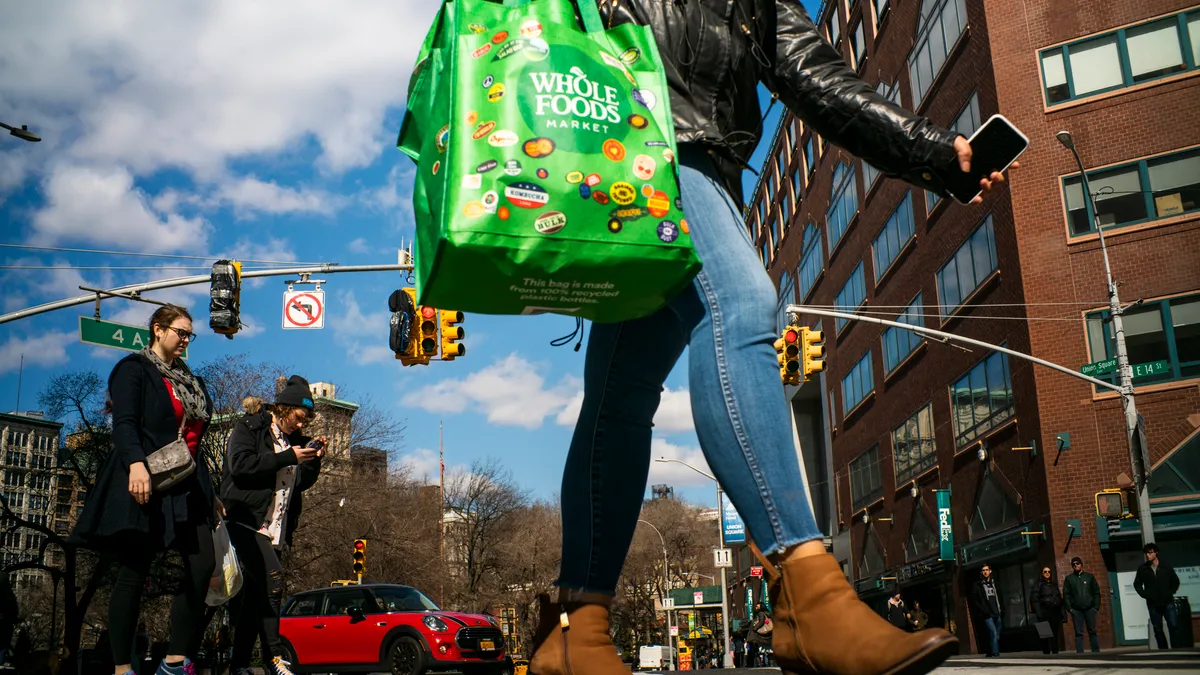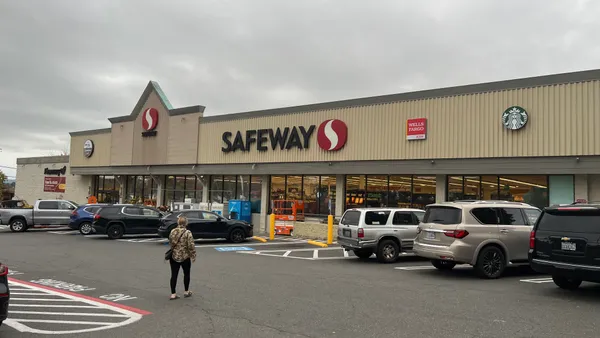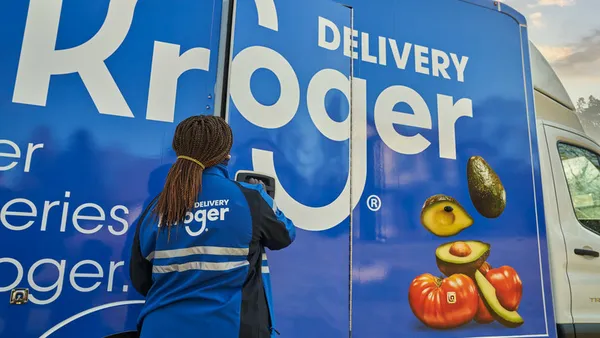Dive Brief:
- Grocery e-commerce sales totaled $6.7 billion in July, marking the lowest monthly total so far this year, according to the latest e-commerce report from Brick Meets Click and Mercatus.
- Delivery and pickup sales totaled $5.3 billion for the third straight month — a level that's 4.5 times greater than pre-COVID sales measured in August 2019.
- Total e-commerce sales for July declined mainly due to a drop in ship-to-home sales of around $100 million. Decreases in spending per order and monthly order frequency were partially offset by more monthly active users.
Dive Insight:
Pickup and delivery sales have been stable since May at just over $5 billion, but shifting consumer behavior as the pandemic continues disrupted pickup’s reign in grocery e-commerce in July, according to Brick Meets Click partner David Bishop.
July saw ship-to-home grow its share of monthly online grocery orders by nearly 3 percentage points, while pickup lost five share points compared to June. The share of monthly active users using pickup dropped 3 percentage points on a month-over-month basis, while those who used delivery and ship-to-home grew by six points and four points, respectively.
While retailers have rolled out contactless e-commerce options, Bishop noted shoppers may still feel hesitant to use pickup, which often involves an employee handing off the order or placing it in the shopper’s vehicle.
“Although pickup continued to have the largest [monthly active user] base, share of orders, and sales during July 2021, concerns about the delta variant’s transmissibility may be motivating customers to temporarily shift away from pickup as a means of social distancing,” Bishop said in the report.
Although ship-to-home's share of monthly orders grew, its average order value dropped nearly 19% compared to June, bringing down the channel's total sales and contributing to the overall decline in e-commerce sales for the month.
July saw an increase in the number of households shopping online for groceries, up almost 5% from June with people ages 18-29 accounting for the largest bump — more than 7% — among age groups, which are all turning more to e-commerce.
The findings indicate that e-commerce is finding its footing following the boom in online shopping last year when pandemic restrictions first swept the country. More than four in 10 monthly active users have made three or more online orders each month since January, per the report.
With the delta variant fueling COVID-19 case surges around the U.S., e-commerce may continue to see choppy sales as consumers reevaluate how they want to get their groceries.
"It just underscores the challenge of living through this volatile, uncertain time," Bishop said in an interview. "Business is changing so rapidly month over month versus year over year, and [it's] uncertain because we have a lot of federal interventions going on now … that, while necessary, are in a way propping up some of the behaviors that we're seeing."
Sam Silverstein contributed to this story.












